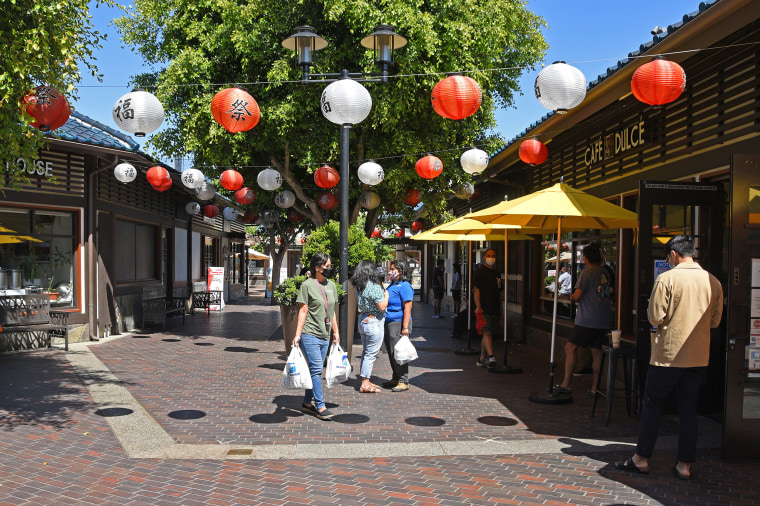While Los Angeles’ Asian population is booming, a new study found some troubling patterns in how that growth translates — or doesn’t translate — to political representation.
With Asian voters widely dispersed because of how the city’s district lines have been drawn, the city’s third-largest racial group is facing structural obstacles at the polls, the report said.
The analysis, released by UCLA’s Asian American Studies Center in May, painted a picture of the city’s Asian electorate and how it’s being represented in local government bodies like the City Council.
The authors said they were surprised by what they found. Between 2010 and 2020, L.A.’s Asian population grew by 8.2% compared to a 2.8% growth in the rest of the city. Asians (11.8% of the population) now fall behind only Latinos (46.9%) and whites (28.9%) in population size, but their voting share remains low.
“The system is not equitable right now,” said Nathan Chan, an assistant professor at Loyola Marymount University who worked on the report. “Asian Americans are the third largest across the City Council districts, but they’re the smallest voting minority.”
The population of eligible Asian voters in L.A. doesn’t have the majority voting share in any district, even in those that encompass their ethnic neighborhoods like Chinatown and Koreatown. It ends up stifling their vote, Chan said, and ultimately makes it much harder for them to elect their preferred candidates.
A factor at play might be how the City Council districts are drawn, he said.
“In the last redistricting cycle, there was a decision to split the district that runs through Koreatown right in half,” he said. “That has huge implications for dispersing the Asian American vote.”
The largest proportion of eligible Asian American voters lies in District 1, which encompasses part of Koreatown. They only number 21% there, according to the report, and representation continues to get lower from there.
“That’s the largest population and even so, that’s relatively small,” Chan said. “Some would say we need a larger Asian American district, or some might also say we need to expand the number of City Council seats so that perhaps Asian Americans have a larger chance to win a seat.”
The report also found that few Asian American candidates even run for L.A. City Council, a problem that Chan said may stem from the same structural challenges.
“That might not necessarily be just as simple as Asian Americans don’t want to run,” he said. “When Asian American candidates do run, they definitely can win. What we find is that Asian Americans do support Asian American candidates.”
But with the current districts, Asians can only realistically elect their preferred candidate if they gain the support of other racial groups, he said.
“There’s some kind of systematic problem that’s going on,” Chan said. “Asian Americans’ proportion and the needs of the Asian American community needs to be taken into consideration.”

